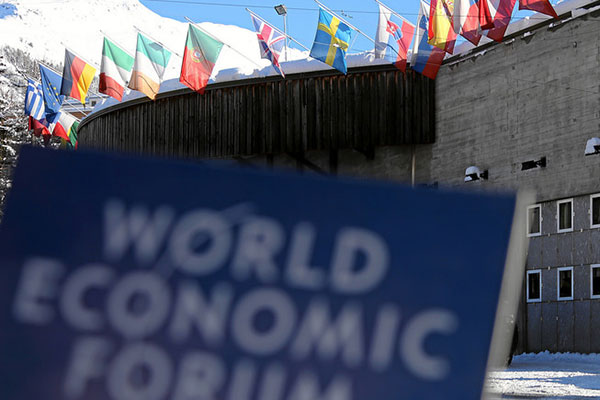
Everything you need to know about Davos 2017
DAVOS, Switzerland, January 16, 2017
By Ceri Parker
Nearly 3,000 people will converge on a small town in the Swiss mountains for the World Economic Forum’s Annual Meeting 2017, running from 17 to 20 January. What are they doing there? Who are they and what do they hope to achieve?
Unless you have been living under a rock on Mars, you will be aware that 2016 was a turbulent time for global affairs, with a backlash against globalization leading to two surprising vote results and a rise in populism in the West.
As the power balance in the world shifts, the theme of the meeting is “Responsive and responsible leadership”. How can leaders be responsive to the genuine frustration of people left behind by globalized market capitalism, in a responsible way that offers workable, fair and sustainable solutions?
As Professor Klaus Schwab, founder and executive chairman of the World Economic Forum, explained: “The world around us is changing at unprecedented speed. At this tipping point, our traditional concepts of society, meaningful employment and the nation state are challenged, and many understandably feel insecure or even threatened.”
“A new model of responsive and responsible leadership is needed to allow us to address the challenges the world faces, from security to the Fourth Industrial Revolution, with long-term, action-oriented thinking and solidarity on a national and global level,” he added.
The meeting will focus on four key leadership challenges for 2017: strengthening global collaboration, revitalizing economic growth, reforming capitalism and preparing for the Fourth Industrial Revolution – a huge leap powered by the digital age, which is transforming the way we live and work. It will do this through a programme where more than half of the 400 sessions focus on social inclusion and development.
Davos revolves around the idea that the only way to address big challenges is to talk to all groups in society and all members of the international community. This is multi-stakeholder theory, and the Forum believes it’s as relevant today as it was in 1971 when the first Annual Meeting was held.
This year, the meeting will include Shaping Davos, connecting leaders with young people from 20 cities around the world to address the concerns of the millennial generation, as well as 30 sessions dedicated to finding better ways to deal with humanitarian crises, and a number of sessions from social entrepreneurs – people who harness the power of business for social good.
Who’s going?
One-third of the 3,000 participants come from outside Europe and North America, while one-third will represent stakeholder groups outside business and government, making it the most diverse Davos yet.
In addition to government delegations from over 70 countries, including all G20 nations, this year’s meeting will be attended by António Guterres, the new Secretary-General of the United Nations. The meeting will be opened by President Xi Jinping of China, who will be accompanied by the largest delegation of Chinese officials since the country first participated in an Annual Meeting in 1979.
What has Davos achieved in the past?
In 1988, the signing of the “Davos Declaration” between Greece and Turkey avoided two nations going to war. In 1992, a recently liberated Nelson Mandela shook hands with South African President FW de Klerk, a key moment in the end of the apartheid era. GAVI, a global alliance to vaccinate children in the poorest parts of the world, publicly launched at Davos in 2000.
While the Forum is proud of this history, it’s important to understand that Davos is meant to be a platform: a facilitator rather than a do-er. It’s a way of getting all the people who can make a difference, who might not otherwise meet, in the same room. What’s more, Davos is just one event in a year-long calendar of regional and other meetings, as well as projects and initiatives that target everything from curbing climate change to helping business leaders push for peace in the Middle East.
Why Davos?
The average temperature in January is -5 degrees centigrade, it’s over two hours by train from the nearest major airport, but the Swiss resort town has a long history as a meeting place for the exchange of ideas. In the 19th century, Davos became well known for its sanatoria, where TB sufferers – including writers – sought a cure in the cool, clear air. Thomas Mann’s 1924 novel, The Magic Mountain, which explored the clash of ideas in a modernizing Europe, was set in Davos. In the same decade, Einstein lectured at a philosophical conference there. The isolated setting is supposed to help visitors to look beyond their everyday concerns.
How can I follow the meeting?
You don’t have to be in Davos to take part. WEF shares ideas and insights from Davos via Twitter, Facebook, YouTube, Instagram, LinkedIn, Google+ and YouTube, and will be publishing over 100 blog posts on our writing platform, Agenda. This year WEF is encouraging its digital audience to leave questions for Davos participants taking part in its Facebook Live interview series.
Ceri Parker is the Commissioning Editor, Agenda, World Economic Forum
This article is part of the World Economic Forum Annual Meeting 2017. The views expressed in this article are those of the author alone and not the World Economic Forum.







